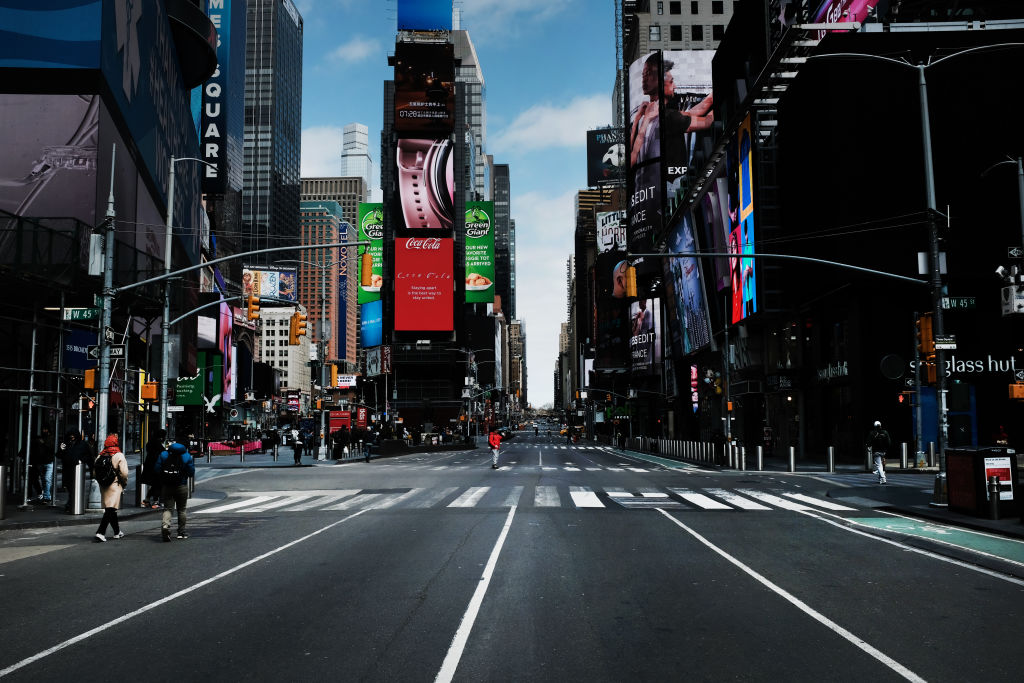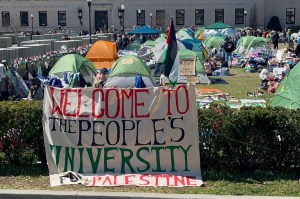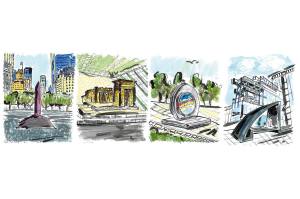New York is back. It’s so back. It’s extra back. It’s better than ever. It’s really not.
I’ve been a New York supremacist my entire life. I’ve been to your city. Your city is fine. Your city is not New York City. Your city has the one deli, the one restaurant, the one street. My city has them all. But in the time of “equity,” the best city is being brought down to size.
My teen years were spent in the bad old New York. Drinking on Ludlow Street when it had one bar, going to Limelight on Wednesday nights, hanging out with squatters in Tompkins Square. New York was in peril and as I smoked weed in front of police officers on St Mark’s Place, I knew it. Everyone carried a weapon and looked out for deranged people who might push you on the tracks. That was life.
Rudy Giuliani became mayor in 1994 and so much about New York City improved. The danger was no longer a permanent fixture. Eight years of tight leadership was fo lowed by twelve more of hardass Michael Bloomberg. These men were not meant to be your friends. They were there to fix things. They went too far sometimes. Bloomberg is still remembered as a nanny who wanted to ban large sodas. Giuliani got a little nuts over some bad art at the Brooklyn Museum and also floated a plan to seize cars if the driver was caught drunk-driving. They weren’t perfect but they were very effective.
The complaints about New York, always from newbies, was that it was too sanitized, too Disneyfied, not enough risk. But really New York was in its glory in those years. It was still wild and beautiful but cleaner, brighter, safer. Suddenly it was very clear that the way we had lived before had been bad. This was the New York that lifelong New Yorkers had suffered for.
The good times were too good, it turns out. In 2013, New York City elected Bill de Blasio as mayor. New York couldn’t possibly decline: we were riding so high, it didn’t really matter who was mayor. When de Blasio was re-elected in 2017, it was mostly on the evidence that even a bumbling, absent mayor couldn’t do too much harm to the city. We were that great.
It’s true that if times had stayed good, the reign of de Blasio might not have mattered too much. But when Covid hit, we were in the exact wrong hands for a city to make a recovery. The governor at the time, Andrew Cuomo, pretty openly hated the city. He’d make nonsensical rules like closing restaurants to indoor dining in the boroughs while allowing them to stay open in the rest of the state, often when they had higher cases numbers than the city.
If we compare the two men’s Covid oversight, de Blasio did a slightly better job. At least he fought to open schools (though ultimately he failed). But he too is not a real fan of New York. He shuttles between the mayoral home on the Upper East Side and his home neighborhood in Park Slope and rarely sees anything in between. This isn’t his city. He does not emote for it. He was chosen as a warm body and that’s exactly what he delivered.
The worst part was the silence from New Yorkers. Where were the badasses? How were New Yorkers so meek, so cowed? The Covid rules made no sense but none of them said so. When much of the rest of the country moved on, New York stayed suspended in its Covid amber. Even the advent of vaccines didn’t move the needle much. “Hot vax summer” was a blip.
On October 20, the mayor implemented a vaccine mandate for all indoor activities. Anyone twelve and up has to show a vaccination card as well as ID to be admitted to museums and indoor activities. Restaurants are suffering. They’re losing staff over the mandate and 61 percent of restaurants report large groups canceling reservations. A Saturday night in Manhattan is tame. Some restaurants are full: the lucky ones. But so many are empty, looking like they are holding on through the holiday season and ready to call it a day in January.
But hey, at least the mandates are working. It’s just unclear what they are working to do. The mayor calls them a “success.” On the day the mayor announced the most recent mandates, the seven-day average of Covid-19 cases in NYC was 1280. A month later, that number was 1416 and climbing.
“New York is back,” say people who don’t leave their homes. The streets are so much emptier than they’ve ever been. For those of us out in our city, we know New York is fractured and in jeopardy. It doesn’t have the freedom of the dangerous pre-Giuliani days, it doesn’t have the glitz and the glamour of the Bloomberg years, it’s neither safe nor fun. There’s a darkness over the whole city and no one talks about it. The best city in the world is in decline and its denizens don’t seem to notice. It’s not back. It’s not even close.
This article was originally published in The Spectator’s January 2022 World edition.


















